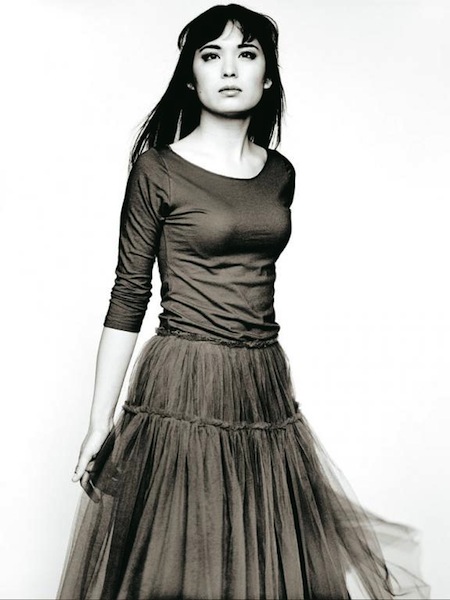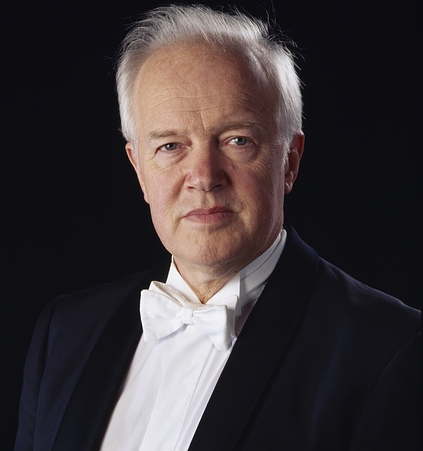Alice Sara Ott brings singular Tchaikovsky style to NSO

Alice Sara Ott performed Tchaikovsky’s Piano Concerto No.1 with Edo de Waart and the National Symphony Orchestra Thursday night.
Alice Sara Ott had a dynamic debut with the National Symphony Orchestra in 2013. The Munich-born pianist’s return to the Kennedy Center Concert Hall finally happened on Thursday night. She took the solo part in that blockbuster of blockbusters, Tchaikovsky’s Piano Concerto No. 1. Guest conductor Edo de Waart also led Rachmaninoff’s Third Symphony and yet another recent work by composer-in-residence Mason Bates.
Ott took her time with the enigmatic introduction to the first movement. In the several cadenza moments, where she could apply heavy rubato, Ott gave a velvety finish to skilfully separated layers of voices. Her technical accomplishment was impressive, but she tended to pedal the octave sections heavily, blurring them into a cloud, which kept Ott’s signature bare feet in action. Her best playing came in the dreamy second theme, which sounds like a lost episode from one of Tchaikovsky’s ballets (“Clara meets the Icicle Children”). When that melody came back in the final cadenza section, Ott picked it out of the whirring trills in a dreamy, Debussy-like trance.
Ott kept the second movement simple and soft, a strict pacing supported by de Waart, whcih appeared to catch some of the NSO solo musicians off guard at times. She gave the fast section of this movement a fairy-light touch, her technique here the most scintillating, delighting in the circus-like atmosphere. Having taken some liberties earlier, Ott and de Waart ripped through the whirling finale, daring and Mephistophelean in spirit. Ott responded to extended ovations with an encore, a delicate, melancholy rendition of Chopin’s Waltz in A Minor, op. posth.

Edo de Waart
De Waart’s last appearance with the NSO, a concert with tenor Ben Heppner in 2009, was canceled, so it was good to see him at the podium again. His rendition of Rachmaninoff’s Third Symphony brought out all the best qualities of a composer whose saccharine music can be grating for some. Along with The Bells, which the composer at first thought of as his Third Symphony, and the final Symphonic Dances, the Third Symphony is easier to like.
A subdued duet between horn and cello set a meditative tone to the first movement, which de Waart allowed to unfold at a relaxed pace. His gestures, always clear, translated to a confident unity across the orchestra, bringing out some lovely playing in both loud and soft sections. The duet of horn with harp that opened the second movement, one of the more restrained slow movements in Rachmaninoff’s oeuvre, was an example. In the sparkling Scherzo section of this moody movement, wisps of celesta and percussion highlighted music that bristled with energy.
The third movement had a more cinematic scope, with de Waart keeping the interpretation more agitated in style. This prevented the hokier aspects of the score from becoming too prominent, even as Rachmaninoff put the movement’s main theme through a fugal process. Peter Cain, who joined the NSO this season, had some fine solos on bass clarinet, and de Waart beautifully calibrated the final surge of the symphony’s conclusion.
De Waart gave the world premiere of the Mason Bates piece that opened this concert, Garages of the Valley, with the St. Paul Chamber Orchestra in 2014. Inspired by the humble garage origins of Silicon Valley innovators, the percolating opening came in fits and starts at first, like a machine sputtering as it gets going. A patter of pitchless percussion replaced the techno-style beats often added by Bates from his laptop, fading as the motif of Doppler-effect crescendos and decrescendos took over.
The middle section, filled with those swells of sound, went from a sort of Sibelian fullness to a Bernstein-esque section that pulsated to a quasi-Latin beat on the bongos, col legno strikes on the cellos, and the violinists drumming their fingers on their instruments. The concluding section was a mixture of Glass-like repeated motifs and a static morphing of chords from one to another, somewhat reminiscent of Brian Eno’s Music for Airports. A return to the rhythmic vitality of the opening provided a sort of conclusion, but the piece often felt like a series of benign cues for an unseen movie.
The program will be repeated 8 p.m. Friday and Saturday in the Kennedy Center Concert Hall. kennedy-center.org; 202-467-4600.



